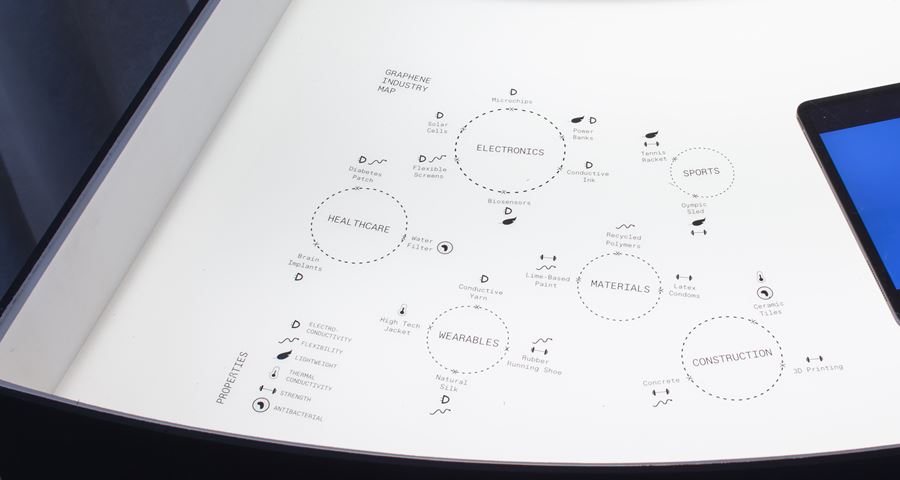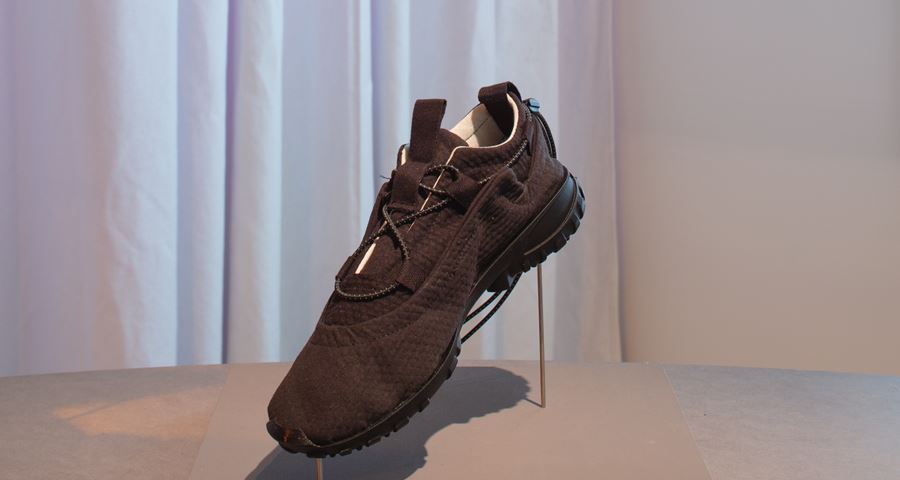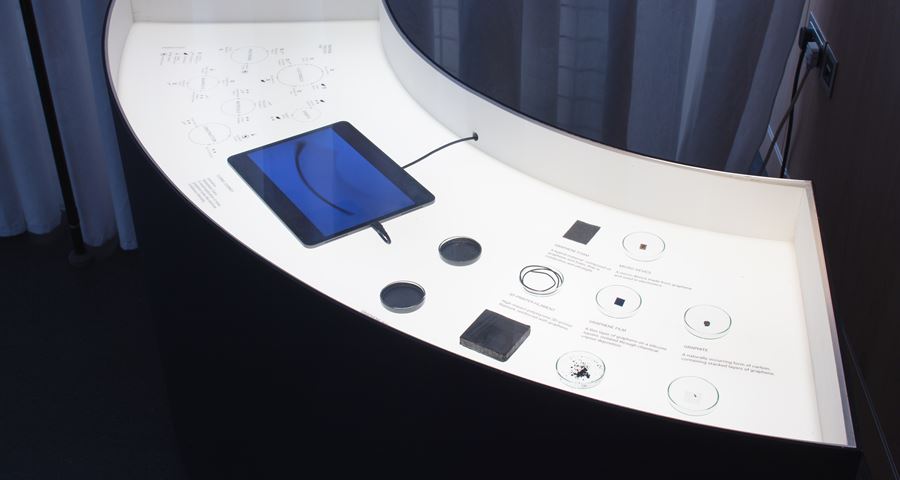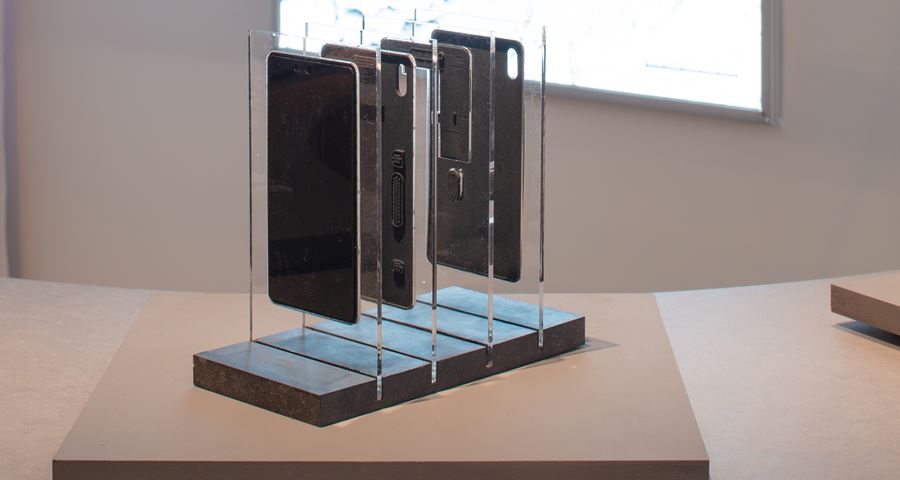Designers in Residence
Q&A -Marta Giralt
To mark International Women's Day, the Design Museum caught up with one of this year's designer in residence, Marta Giralt, who has explored the wonder material graphene.
#DesignersinResidence

Q:Tell us a little bit about your background?
A: I studied Fashion Design in Barcelona where I specialised in materials and print design. After graduating I worked in menswear and later on in print design, both in Barcelona and in Amsterdam. I then moved to London, where I studied an MA in Material Futures at Central Saint Martins. There I developed an interest in emerging technologies and materials, and how they impact our everyday lives and society. Having graduated, I started working for the course as a year tutor and have worked as a freelance design researcher for companies such as FranklinTill, WeTransfer, Nelly Ben Hayoun Studios and Mold Magazine amongst others.
Q: Why do you consider graphene a wonder material and why is it so important?
A: Graphene has been labelled as a wonder material because of its incredible properties. It is a very flexible material, optically transparent, superconductive, lightweight and very strong. I personally believe that it becomes a wonder material only when it is applied in very specific areas.
For example, graphene can make a huge impact in the area of solar energy. At the moment solar panels are large, quite clunky and they struggle to store energy properly. Using a material like graphene would enable flexible, lightweight solar panels with batteries that are much smaller and have much more capacity.

Q:Take us through your installation at the Design Museum, what will visitors expect to find?
A: My installation at the Design Museum showcases the research I have developed over these past months around graphene and its qualities. On one side, I have focused on making this invisible material more accessible and open to the public. I have worked with scientists at Cambridge University to compile a series of samples and develop a documentary which showcases how this material is developed and how it is being implemented in research and industry.
In the exhibition visitors can also engage more directly with the opportunity of using this material for more environmental and social purposes. At the moment the majority of the patents are being filled for innovations in consumer electronics. However, as a wonder material, it can also create a huge impact in industries such as renewable energies, filtration systems, batteries, biosensors and material innovation. In the installation there are five objects on display which highlight these applications using a voice over to narrate how they would be used in everyday contexts.
Q: How does your project respond to this year’s residency theme – “cosmic”?
A: I began this project by comparing the world of nanotechnology to the universe, which is understood as a structured, organised system. If we changed one of its components we would cause unpredictable changes. Nanotechnology works in a similar way where by manipulating materials and matter on an atomic scale we can completely change their structure and function. This is an exciting space for design and really changes the rules of how we think of and create materials. Graphene is also changing the landscape of space travel as it’s being used to develop new materials for space suits, space ships and missions on Mars.

Q: How was graphene first discovered
A: Graphene was isolated in 2004 by scientists Andre Geim and Kostya Novosolev from the department of Physics and Astronomy at the University of Manchester. In their experiments they used sticky tape to peel off layers from graphite and were able to isolate a single layer of graphene by using this method. They later proved the material’s ability to transfer electricity better than any other material. This discovery earned them the 2010 Nobel Prize in Physics.
Q: What do you think are the best five uses for graphene now?
A: 1. Batteries: Making them more efficient and smaller in size. 2. Printed electronics: using graphene to create conductive textiles which can be used in garments. 3. Water filters: Graphene is being used to filter the smallest toxic particles in water which are normally very difficult to extract. 4. Extending the life of recycled materials: by mixing graphene with materials such as plastic (which degrades after being recycled), you can extend the life cycle of these materials and keep their original quality. 5. Biosensors: using graphene’s superconductive qualities and small size to measure information of organic matter like cells or DNA.

Q: How will graphene impact on our everyday lives?
A: Graphene has many applications in everyday life products and materials. On one hand, it is starting to revolutionise the field of electronics. For example, batteries (in smartphones, power banks, electric cars, solar panels…) which contain graphene can be charged very quickly and are much smaller in size.
Construction materials are also starting to benefit from some of the properties of graphene. Graphene-based concrete or paint uses less material and is still very (or more) resistant. Graphene will also impact the future of solar energy and contribute to making these technologies accessible to larger audiences.
Q: What does the future hold for graphene and the opportunities out there?
A: Where to begin! I think that at the moment graphene has a lot of millage in labs and in research centres. The future of graphene will centre around the challenges of applying it into everyday applications. At the moment, whilst it’s a very interesting and fascinating material, specialists are struggling to make it a reality. Collaborations between designers, engineers and scientists are starting to happen, and we are slowly beginning to see how graphene will revolutionise a large amount of industries from fashion, to construction, electronics or even space travel.
At the moment creating standards for the material is crucial to turning it into a viable material that we can start to work and design with. Although you can already purchase graphene online, it’s still very expensive and there aren’t really any regulations or categorisation methods for it to be fully implemented in industry.

Q: What has been your best experience from the Design Museum residency so far? Do you have any advice for anyone thinking of taking part in the programme next year?
A: Being able to work in the same space as professional designers that have different practices to me has been very constructive and something I have very much enjoyed. It has definitely influenced different parts of my project and the way I thought about my final installation and project.
For future designers in residence, I would recommend to make the most of your time on the residency to connect with experts, practitioners and craftspeople. The Design Museum brings together fascinating people from different practices and backgrounds which you can easily connect to and which can really help you push forward both your project and your career.
Q: It’s International Women’s Day (8 March); do you have a message for young women considering a career in design?
A: Trust yourself, value your ideas and be passionate about the work you do. Design isn’t always the easiest of industries and really believing and loving what you do can help you overcome those moments where, perhaps, you are feeling insecure or doubting yourself.
Q: Finally, it’s International Day of Happiness this month, which design makes you happy?
A: The moon cup. It has really changed my life and (although I know it isn’t for everyone) I would recommend all women to give it a try.
Related exhibition